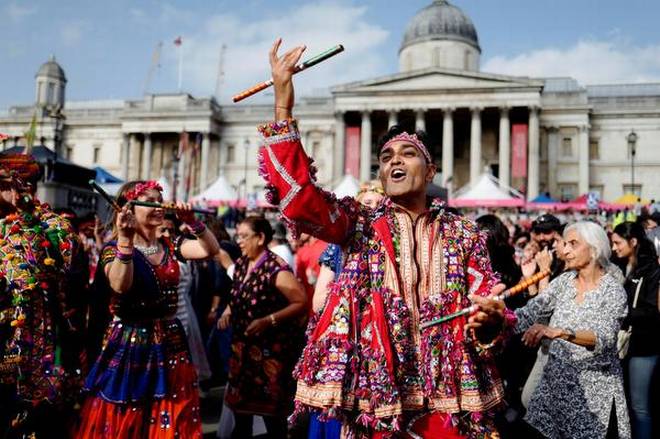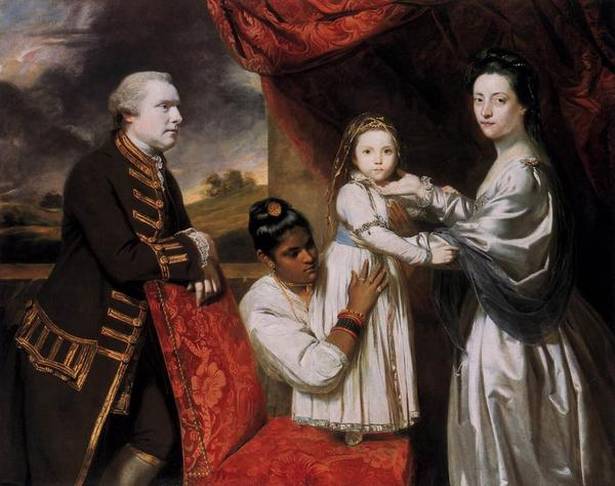ENGLAND :

The 500-year-old history of Indians in London rubbishes notions of an ‘English’ England even during the Renaissance
With the Windrush scandal in a Brexit-torn Britain, thousands of British nationals of immigrant origins were denied basic welfare rights; many illegally deported. Protesters recently marched to the British Parliament. Protests against immigration bans and white nationalism in modern Britain date back to the 60s, when a new wave of immigrants began coming in from the Commonwealth countries, including the Caribbean, Africa, and Asia.
But the history of Asians — especially Indians — in London is staggeringly long, dating back to Elizabethan times. And, along with the history of other immigrant communities, their history squarely rubbishes the jingoist notions of England being purely ‘English’ even during the Renaissance or the Puritanical Movement.
Indians have lived and died in London since before the birth of Shakespeare. On March 22, 1550, Salamon Nurr — the Anglicised name of Suleman Noor — was buried at St. Margaret’s in Westminster. On December 28, 1613, another Indian, Samuel Munsur, married Jane Johnson at St. Nicholas Church in Deptford, about five miles from Shakespeare’s Globe Theatre in Southwark. More Indian betrothals, baptisms and burials followed. ‘Peter Pope,’ a lad from Bengal, was the first known Indian to be baptised in London, on December 22, 1616. He was brought to London in 1614 by Captain Best and handed over to Reverend Patrick Copland, the East India Company’s chaplain in Masulipatnam (now Machilipatnam in Andhra Pradesh). Copland instructed him in religion, so that Peter could administer the conversion of more Indians on his return.
The ‘Indian Caliban’
‘What have we here? A man or a fish?’ asks Trinculo, the Shakespearean fool in The Tempest (1610). ‘A strange fish! Were I in England now, as once I was, and had but this fish painted, not a holiday fool there but would give a piece of silver… When they will not give a doit to relieve a lame beggar, they will lay out ten to see a dead Indian.’
On Fenchurch Street where Peter — the Indian Caliban — was Anglicised, the entire political apparatus of England came to watch. Peter’s name was suggested by King James himself. The Archbishop of Canterbury blessed the baptism in the presence of the directors of the Companies and the members of the Privy Council. Peter’s entry into the London scene was a manifestation of the ‘boy stolen from an Indian King,’ that Shakespeare wrote about in A Midsummer Night’s Dream (1595). Peter returned to India in 1617, soon to be a forgotten character from an unsung history.
In 1720, an Indian youth of 16, was taken from Madras, shipped to London by Captain Dawes, and gifted to Mrs. Elizabeth Turner, who christened him ‘Julian’. Mrs. Turner forced him to dance and croon — as she deemed was suited to his custom — before guests. On August 8, 1724, Julian stole 20 guineas and set the house on fire. When arrested, he confessed to the theft. Julian was publicly executed at Tyburn Tree, but not before consenting to be baptised and rechristened as ‘John’ in a last ditch attempt to commute his death sentence.
Another Indian, ‘Catherine Bengall’, was purchased in Bengal at the age of 10, trafficked to London by one Suthern Davies, and gifted to his relative, Ann Suthern. She was baptised at St. James’s Church, Westminster, on November 26, 1745, and set free by the Sutherns. She then became the concubine of one William Lloyd, who left her pregnant and penniless in July 1746. She was sheltered at the local parish workhouse of St. Martin-in-the-Fields, where her son was born on September 22, 1746, and christened William, after his father. Soon after, either due to death or destitution, the names of Catherine and William faded from the annals of the East India Company, just as Shakespeare’s mythical sister — Virginia Woolf’s creation, Judith Shakespeare — had disappeared from London 150 years ago.

From the period between Peter’s baptism and John’s hanging, 15 burials and baptisms have surfaced from the various parish churches in London. Not all Indian converts to the Church of England were necessarily baptised, entailing that there may have been more Indians than registered in Christian records. That number was obviously much smaller than those Indians who did not convert at all.
Old records
Some of those who did convert, and whose names were recorded in the parishes of St. Botolphs Aldgate, St. Andrews Holborn, St Olave Hart Street, St. Edmund Lombard Street, or All Hallows Lombard Street, were: James, a servant of James Duppa, the beer-brewer; Phillip, an Indian born in Surat; Thomas, a servant of Lord Brooke; George, a servant of Robert Andrews; Trumbelo, a black Indian; Loreta, a female servant woman; Marck Anthony; Mary Alphabet, a servant of Mrs. Richardson; Joan Hill, a servant of Lt. General Hill; Daniel Mingoe, a servant of the Lady Ann Godwin; Francis Brewer, a servant of Thomas Rutter; Sarah Bamoo, a female servant; Titus Vespatian, a servant of Thomas Robinson; Thomas James Campbell, an Indian youth, and so on.
A few early examples of representations of Indians in London’s popular culture are Anthony van Dyck’s portrait (1633) of William Feilding, 1st Earl of Denbigh, saved in a forest by a turbaned Indian boy; Peter Lely’s portrait (1674) of Lady Charlotte Fitzroy being offered grapes by an Indian page; and Joshua Reynolds’ painting (1765) of George Clive and his Family with an Indian Maid, in London. Much before Charles II took the island of Bombay and a chest of tea for his dowry, in 1662, Indian servants had started working in London homes. The historian Michael H. Fisher, in his book, Indian Travellers and Settlers in Britain, 1600-1857 (2004), terms these fleets of Indians as ‘counterflows to colonialism’. During and after the Restoration, Indians in London remained in undocumented servitude. After 1657, it was easier to find them on the shores of England than on the Coromandel or the Malabar. The directors of East India Company decided that those returning to India needed an official licence, which cost £12 (about £1,500 in today’s currency). This left Indian labourers stranded in London, left to beg or offer themselves up for dockyard or domestic labour.
By the end of the 19th century, there were about 140,000 British Europeans in India. India’s population then was 330 million. According to Fisher, by the mid-19th century, thousands of Indian lascars, ayahs, scholars, soldiers, students, merchants and diplomats had travelled to Britain. Fisher suggests that the number of Indians in Britain around this time was 40,000, within a total population of about 30 million. If Fisher’s number is anything to go by, between the 19th and 20th centuries, about 0.15% of the British population was Indian. Around the same time, British Europeans accounted for less than 0.05% of the population in India. Arguably, the proportion of Indians living in Britain in the 19th century was thrice the proportion of Britons living in India. In the 1930s, Indian students accounted for 87% of all colonial students in British universities. By 1939, Indians — largely Sikhs — were conspicuous in every large British town.
The early history of the Indian diaspora in Britain is often restricted to Joseph Emin, Ihtishamuddin, or Sake Deen Mahomed — 18th century Indian travellers, diplomats, or entrepreneurs who reached London after the British conquest of Bengal. But to challenge the brute rhetoric, we need to cultivate deeper historical awareness about the Indians who lived in London nearly 500 years ago, rubbing shoulders with Shakespeare’s audiences.
The writer teaches English at O.P. Jindal Global University, and is author of The Purveyors of Destiny: A Cultural Biography of the Indian Railways.
source: http://www.thehindu.com / The Hindu / Home> Society / by Arup K. Chatterjee / August 04th, 2018








